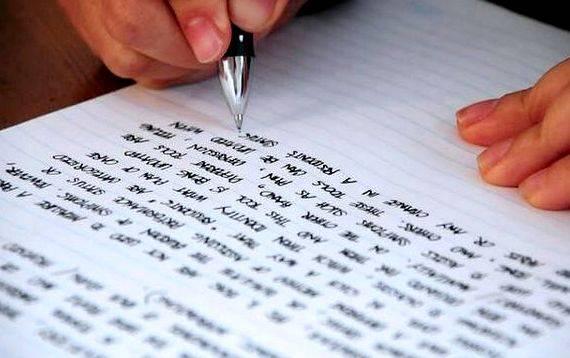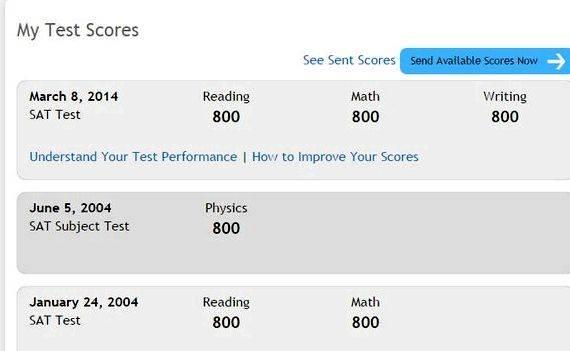Responses to the optional SAT Essay are scored using a carefully designed process.
- Two different people will read and score your essay.
- Each scorer awards 1–4 points for each dimension: reading, analysis, and writing.
- The two scores for each dimension are added.
- You’ll receive three scores for the SAT Essay — one for each dimension — ranging from 2–8 points.
We train every scorer to hold every student to the same standards, the ones shown here. Learn more about the new SAT Essay.
Did You Take the SAT Before March 2016?
You took a different SAT. Learn how the essay used to be scored.
Reading Scoring Guide
Expand All Collapse All
- Demonstrates thorough comprehension of the source text.
- Shows an understanding of the text’s central idea(s) and of most important details and how they interrelate, demonstrating a comprehensive understanding of the text.
- Is free of errors of fact or interpretation with regard to the text.
- Makes skillful use of textual evidence (quotations, paraphrases, or both), demonstrating a complete understanding of the source text.
- Demonstrates effective comprehension of the source text.
- Shows an understanding of the text’s central idea(s) and important details.
- Is free of substantive errors of fact and interpretation with regard to the text.
- Makes appropriate use of textual evidence (quotations, paraphrases, or both), demonstrating an understanding of the source text.
- Demonstrates some comprehension of the source text.
- Shows an understanding of the text’s central idea(s) but not of important details.
- May contain errors of fact and/or interpretation with regard to the text.
- Makes limited and/or haphazard use of textual evidence (quotations, paraphrases, or both), demonstrating some understanding of the source text.
- Demonstrates little or no comprehension of the source text.
- Fails to show an understanding of the text’s central idea(s), and may include only details without reference to central idea(s).
- May contain numerous errors of fact and/or interpretation with regard to the text.
- Makes little or no use of textual evidence (quotations, paraphrases, or both), demonstrating little or no understanding of the source text.
Analysis Scoring Guide
Expand All Collapse All
- Offers an insightful analysis of the source text and demonstrates a sophisticated understanding of the analytical task.
- Offers a thorough, well-considered evaluation of the author’s use of evidence, reasoning, and/or stylistic and persuasive elements, and/or feature(s) of the student’s own choosing.
- Contains relevant, sufficient, and strategically chosen support for claim(s) or point(s) made.
- Focuses consistently on those features of the text that are most relevant to addressing the task.
- Offers an effective analysis of the source text and demonstrates an understanding of the analytical task.
- Competently evaluates the author’s use of evidence, reasoning, and/or stylistic and persuasive elements, and/or feature(s) of the student’s own choosing.
- Contains relevant and sufficient support for claim(s) or point(s) made.
- Focuses primarily on those features of the text that are most relevant to addressing the task.
- Offers limited analysis of the source text and demonstrates only partial understanding of the analytical task.
- Identifies and attempts to describe the author’s use of evidence, reasoning, and/or stylistic and persuasive elements, and/or feature(s) of the student’s own choosing, but merely asserts rather than explains their importance, or one or more aspects of the response’s analysis are unwarranted based on the text.
- Contains little or no support for claim(s) or point(s) made.
- May lack a clear focus on those features of the text that are most relevant to addressing the task.

- Offers little or no analysis or ineffective analysis of the source text and demonstrates little or no understanding of the analytic task.
- Identifies without explanation some aspects of the author’s use of evidence, reasoning, and/or stylistic and persuasive elements, and/or feature(s) of the student’s choosing.
- Or numerous aspects of the response’s analysis are unwarranted based on the text.
- Contains little or no support for claim(s) or point(s) made, or support is largely irrelevant.
- May not focus on features of the text that are relevant to addressing the task.
- Or the response offers no discernible analysis (e.g. is largely or exclusively summary).
Writing Scoring Guide
Expand All Collapse All
- Is cohesive and demonstrates a highly effective use and command of language.
- Includes a precise central claim.
- Includes a skillful introduction and conclusion. The response demonstrates a deliberate and highly effective progression of ideas both within paragraphs and throughout the essay.
- Has a wide variety in sentence structures. The response demonstrates a consistent use of precise word choice. The response maintains a formal style and objective tone.
- Shows a strong command of the conventions of standard written English and is free or virtually free of errors.
- Is mostly cohesive and demonstrates effective use and control of language.
- Includes a central claim or implicit controlling idea.
- Includes an effective introduction and conclusion. The response demonstrates a clear progression of ideas both within paragraphs and throughout the essay.
- Has variety in sentence structures. The response demonstrates some precise word choice. The response maintains a formal style and objective tone.
- Shows a good control of the conventions of standard written English and is free of significant errors that detract from the quality of writing.
- Demonstrates little or no cohesion and limited skill in the use and control of language.
- May lack a clear central claim or controlling idea or may deviate from the claim or idea over the course of the response.
- May include an ineffective introduction and/or conclusion. The response may demonstrate some progression of ideas within paragraphs but not throughout the response.
- Has limited variety in sentence structures; sentence structures may be repetitive.
- Demonstrates general or vague word choice; word choice may be repetitive. The response may deviate noticeably from a formal style and objective tone.
- Shows a limited control of the conventions of standard written English and contains errors that detract from the quality of writing and may impede understanding.
- Demonstrates little or no cohesion and inadequate skill in the use and control of language.
- May lack a clear central claim or controlling idea.
- Lacks a recognizable introduction and conclusion. The response does not have a discernible progression of ideas.
- Lacks variety in sentence structures; sentence structures may be repetitive. The response demonstrates general and vague word choice; word choice may be poor or inaccurate. The response may lack a formal style and objective tone.
- Shows a weak control of the conventions of standard written English and may contain numerous errors that undermine the quality of writing.






 My writing process introduction to management
My writing process introduction to management Particle swarm optimization based clustering in writing
Particle swarm optimization based clustering in writing Chuyen ga o tu my writing
Chuyen ga o tu my writing Writing a short biography about yourself for work
Writing a short biography about yourself for work Writing on your skin with pen
Writing on your skin with pen






